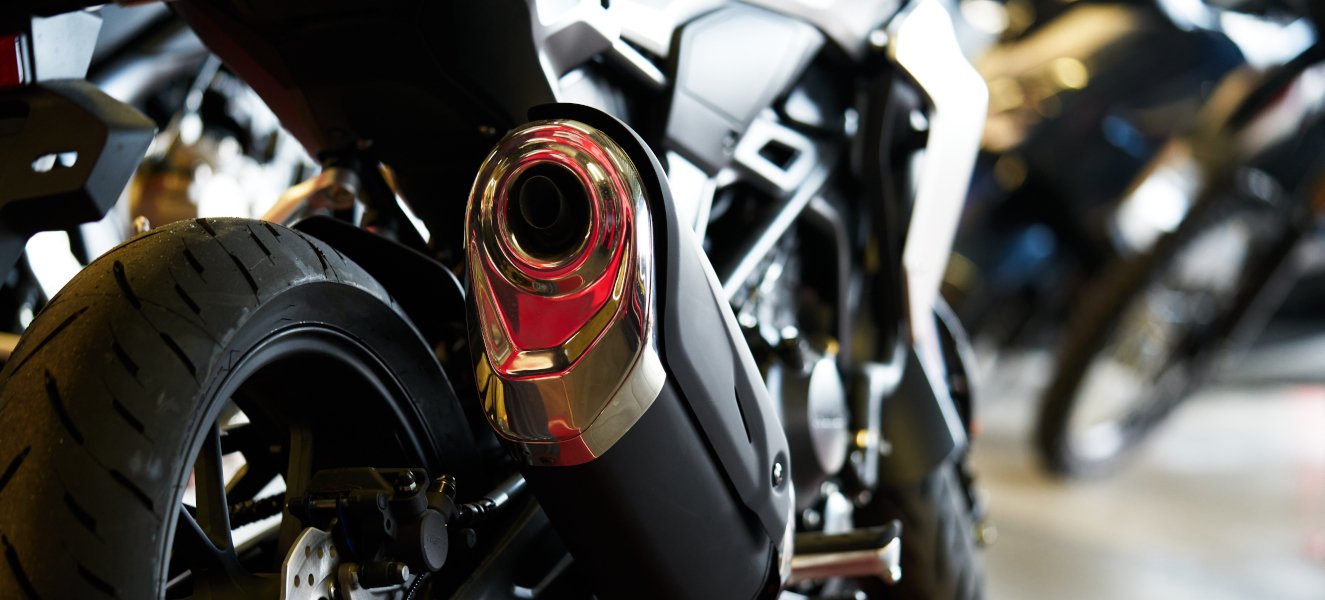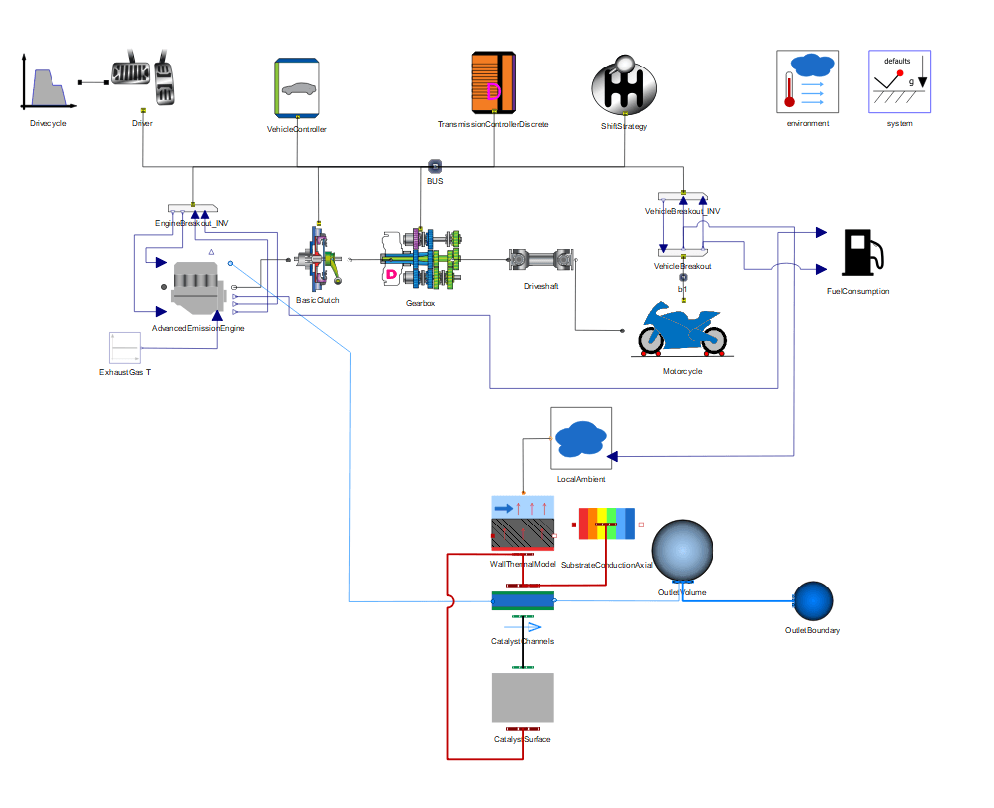
Low emission motorcycles

Reducing internal combustion engine emissions
In today's market with increasing emissions regulations aiming for a net zero future, Original Equipment Manufacturers (OEMs) and manufacturers are under increasing pressure to reduce tailpipe emissions from Internal Combustion Engine (ICE) powertrains and show the durability of exhaust systems that are using catalytic converters, particularly with Euro 5+ due for motorcycles in 2024.
Oil is vital to engine performance for cooling and lubrication, however burning and leaking oil adds to emissions and consumption of carbon-based fluids. Understanding how design parameters affect oil consumption is key to reducing usage whilst maximising component life and durability. The priority of reducing oil consumption has never been greater as motorcycle manufacturers need to meet the Euro 5+ emission standards, as well as developing combustion engines for non-carbon fuels including hydrogen where oil will still be used as the lubricant.
The ultimate design challenge now becomes finding the balance between the fuel economy, machine performance and selection of the right exhaust aftertreatment components to reduce tailpipe emissions in line with new regulations.

In the early stages of development physical prototype modelling is expensive, requiring virtual simulation tools to answer many of the 'What ifs' before committing to a design path. These predictive tools can be used to minimise emissions arising from combustion and Lubricant Oil Consumption (LOC), and to optimise exhaust aftertreatment.
IGNITE, a complete physics-based vehicle systems simulation package analyses the drive cycle models at the heart of exhaust aftertreatment system design. This includes predicting the effect of different control strategies on catalyst behaviour, assessing the thermal boundary conditions for the components, and reducing the fuel economy penalty of lower emissions.
RINGPAK, is an advanced 2D simulation package which enable users to predict and optimise ring pack dynamics, lubrication, gas flow and oil consumption using both steady state and transient models. Motorcycles provide a specific application for RINGPAK. Unlike cars the oil lubricates the transmission and clutch as well as the engine. Higher phosphorus motorcycle oil must be used ensure transmission durability, which when lost into the exhaust system damages the catalyst and increases emissions. Therefore, predicting oil consumption, has a direct effect on reducing exhaust emissions.
WAVE is a 1D Computational Fluid Dynamics (CFD) tool that solves the Navier-Stokes equations governing the transfer of mass, momentum, and energy for compressible gas flows, and includes sub-models for combustion and emissions.


